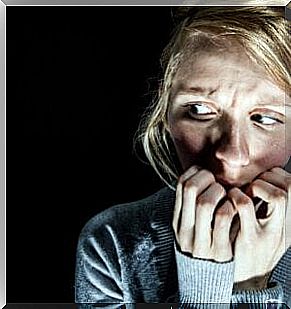Fear Of The Dark: Neuroscientists Speak

Fear of the dark is common not only among children, but also among a good number of adults. We are diurnal animals and the sense we use the most is sight, which wins when what we want to see is illuminated.
Fear of the dark is often associated with childhood or childhood trauma. However, neuroscience has found that there is so much more. Apparently this fear is somehow inscribed in our species.
The absence of light limits us, makes us clumsy. We don’t know where the obstacles are, sometimes we ignore what surrounds us and, in the end, we tend to get more defensive because uncertainty about the surrounding environment increases. Everything indicates that fear of the dark is associated with the way the brain works.
A research on the fear of the dark
Research has been conducted that can provide interesting data on the fear of the dark. The study was published in PLoS ONE in June 2021 and was conducted by neuroscientists at Monash University in Australia.
In a controlled laboratory setting, 23 volunteers were connected to a brain scan system to monitor its activity during the experiment.
They were then undergoing moments of darkness and light. The changes in terms of lighting occurred every 30 seconds. The researchers found that the amygdala increased its activity in the dark.
When the light was switched on, vice versa, it was reduced. Similarly, dim light ranges were introduced which allowed the amygdala to maintain intermediate levels of activity.
The fear of the dark according to neuroscience
The amygdala is part of the limbic system and together they are responsible for our most primitive emotional reactivity. Specifically, the sensations associated with fear depend on this area of the brain. Activates an alert mechanism in the presence of a stimulus perceived as dangerous or threatening.
On the other hand, light not only affects good visibility, but also performs other functions. It is essential to regulate the circadian rhythms, which mark the periods of activity and rest. Likewise, it affects mood, to the point where it is sometimes a drug target in depression treatments.
The experiment conducted by Monash University scientists confirms the link between light, amygdala and fear. When the amygdala is activated, in times of darkness, the feeling of fear increases. At the moment of deactivation, i.e. when there is light, the fear is reduced.
The researchers also found that changes in activation are very fast. It is estimated that the amygdala responds to stimuli in a period not exceeding 100 milliseconds. In other words, it is practically automatic.

An atavistic fear
Neuroscientists have discovered that the fear of the dark has a determining physiological referent. They described how this process works and suggested possible explanations for its origin. However, the reason why the absence of light is so significant in humans may be evolutionary in nature.
In the dark we are much more vulnerable and our brains “know”. Vision loses sharpness, which we try to compensate for by increasing alert levels ; this means that we process any input faster in order to react in the event of a threat.
Certainly the first humans already felt some concern when the sun went down. This was precisely one of the reasons why the discovery of fire was a real revolution.
Even the fear of the dark can be considered a component of survival instinct. The mere fact that there is no light represents a risk, which is why the alert mechanisms are activated.
However, when there is no risk and there is still considerable fear, it could be talking about a different problem.









